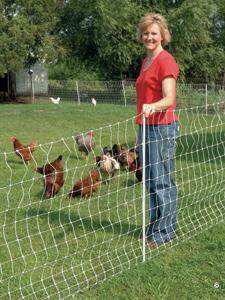




 1
1




My project thread
Agriculture collects solar energy two-dimensionally; but silviculture collects it three dimensionally.
 1
1




 1
1




 2
2












 We're getting our first chicks this week (6 of them). We live in a suburban neighborhood on one acre. We would love to let the chickens free range (paddocks) in one section of our property (around half an acre) that has berry-producing ground cover and several existing mulberry trees. (We would also plant other things like sunflowers, sunchokes, more berries, etc.). Buuuuttttt.... we're struggling with the balance of needing things to be aesthetically pleasing (want to keep the neighbors happy!) and very low-cost. And to be honest, that part of the yard has a very 'park-like' feel to it and my husband isn't keen on breaking it up with fences. If anyone has ideas for this newbie on fencing that would be inexpensive but 'suburb approved' I would appreciate it! Meanwhile, we're planning on a coop and run. Carla - I hope you'll come back during the season and let us know how your experience is going!
We're getting our first chicks this week (6 of them). We live in a suburban neighborhood on one acre. We would love to let the chickens free range (paddocks) in one section of our property (around half an acre) that has berry-producing ground cover and several existing mulberry trees. (We would also plant other things like sunflowers, sunchokes, more berries, etc.). Buuuuttttt.... we're struggling with the balance of needing things to be aesthetically pleasing (want to keep the neighbors happy!) and very low-cost. And to be honest, that part of the yard has a very 'park-like' feel to it and my husband isn't keen on breaking it up with fences. If anyone has ideas for this newbie on fencing that would be inexpensive but 'suburb approved' I would appreciate it! Meanwhile, we're planning on a coop and run. Carla - I hope you'll come back during the season and let us know how your experience is going! {Arcadia Farms} Eat Healthy. Save Money. Buy Local.








Katie Shank wrote:I showed up to ask similar newbie questions. Thanks for letting me tag along... and for the great info!
We're getting our first chicks this week (6 of them). We live in a suburban neighborhood on one acre. We would love to let the chickens free range (paddocks) in one section of our property (around half an acre) that has berry-producing ground cover and several existing mulberry trees. (We would also plant other things like sunflowers, sunchokes, more berries, etc.). Buuuuttttt.... we're struggling with the balance of needing things to be aesthetically pleasing (want to keep the neighbors happy!) and very low-cost. And to be honest, that part of the yard has a very 'park-like' feel to it and my husband isn't keen on breaking it up with fences. If anyone has ideas for this newbie on fencing that would be inexpensive but 'suburb approved' I would appreciate it! Meanwhile, we're planning on a coop and run. Carla - I hope you'll come back during the season and let us know how your experience is going!





My project thread
Agriculture collects solar energy two-dimensionally; but silviculture collects it three dimensionally.








My project thread
Agriculture collects solar energy two-dimensionally; but silviculture collects it three dimensionally.




 1
1




 1
1








My project thread
Agriculture collects solar energy two-dimensionally; but silviculture collects it three dimensionally.

 1
1




Yes, I cut one wing. I thought it was always plural, like scissors!




A grass lawn is a terrible way to raise chickens - no diversity of species, very little food they can get to, and they feel vulnerable. Ours spent most of their time in the wooded part of our yard, scratching around the fallen leaves, sticks, under leafy plants, etc. There, they were so much more likely to be able to get to worms and find centipedes, etc. They like woody/brushy areas best, with some grass for grazing.
 1
1





















 1
1








{Arcadia Farms} Eat Healthy. Save Money. Buy Local.





|
This tiny ad says you shall not pass
Freaky Cheap Heat - 2 hour movie - HD streaming
https://permies.com/wiki/238453/Freaky-Cheap-Heat-hour-movie
|



